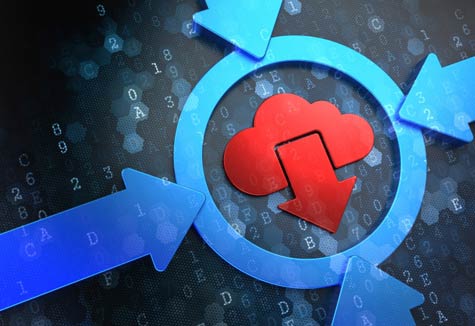It’s been known for quite a while that migrating workloads to the cloud is no easy task. The cloud may be highly scalable and ultra-dynamic data, but at the end of the day it must still be populated with data and applications just like any other infrastructure.
To invoke an image that is appropriate to the season, customers cannot buy your goods if the front door is covered in five feet of snow, so what a good shovel is to Main Street U.S.A., a good set of migration tools is to a cloud provider.
This is leading to a number of cooperative agreements between cloud and platform developers in pursuit of an integrated migration stack that removes much of the complexity from the enterprise side. Equinix and ScienceLogic recently enhanced their existing working relationship to integrate monitoring and migration capabilities into the Equinix Cloud Exchange, which benefits not only Equinix but also its collection of managed service provider partners. And through Equinix’ existing relationships with companies like Datapipe, it will be able to provide advanced migration capabilities for its public and hybrid services.
Still, enterprise executives should , says tech journalist Jeff Bertolucci. Maintaining in-house expertise with cloud architectures and platforms is crucial to ensuring that objectives are being met and costs are being contained. As well, it helps to have local knowledge as to which applications should be migrated and which should stay at home, and how to recode internal applications to better deal with the dynamic nature of cloud infrastructure. Plus, you’ll need someone to help dispose of all of that surplus IT gear that is no longer needed, which in fact is turning into a fairly lucrative cottage industry.
Migration’s twin challenge, of course, is integration, and according to CDW, enterprise executives are growing increasingly hesitant to commit more resources to the cloud due to problems maintaining interoperability between old and new architecture. The upside here is that maintaining an integrated environment is emerging as a key function for IT now that business units are taking it upon themselves to provision their own resources. Plus, issues surrounding migration and integration tend to diminish with experience, with some organizations reporting turnaround times cut in half after just a few deployments.
And we should not downplay the increasingly vital role that automation plays in all this. Companies like BitTitan and Nuix are joining forces to bring advanced automation capabilities to large workload applications like archiving and unstructured data management. By integrating Nuix’ archive extraction platform with BitTitan’s MigrationWiz automation stack, the firms claim to have a cost-effective means to move large amounts of data quickly and at low cost. The system incorporates data processing on a 100GB cost basis, followed by a rapid migration carried out under a user-based model, which offers wide latitude to the enterprise to target key workloads for migration.
For the moment, however, cloud migration and integration remain the top challenges when venturing beyond the data center walls. The tools are getting more sophisticated and the processes more streamlined, but many enterprises are still hesitant to commit not because they don’t appreciate the value of the cloud, but because it is proving difficult to optimize.
Smoothing out the migration wrinkles is the first step in rebranding the cloud as the new standard for IT infrastructure.
Arthur Cole writes about infrastructure for IT Business Edge. Cole has been covering the high-tech media and computing industries for more than 20 years, having served as editor of TV Technology, Video Technology News, Internet News and Multimedia Weekly. His contributions have appeared in Communications Today and Enterprise Networking Planet and as web content for numerous high-tech clients like TwinStrata, Carpathia and NetMagic.




